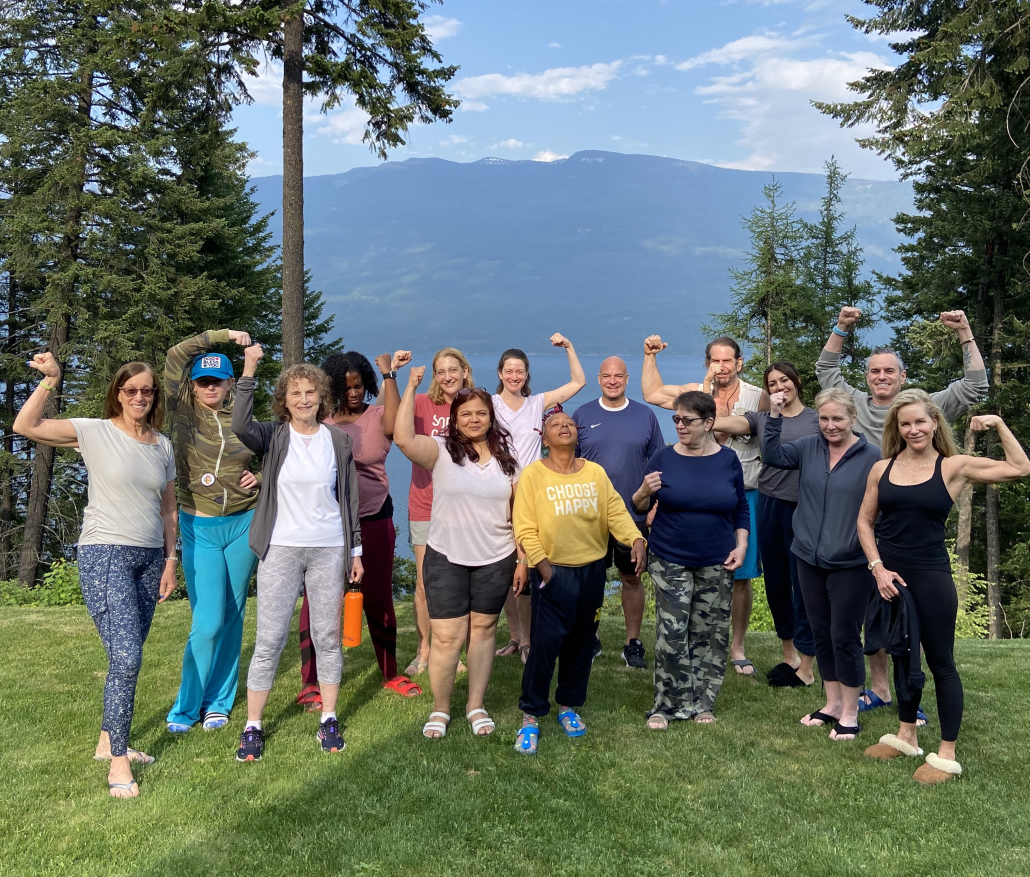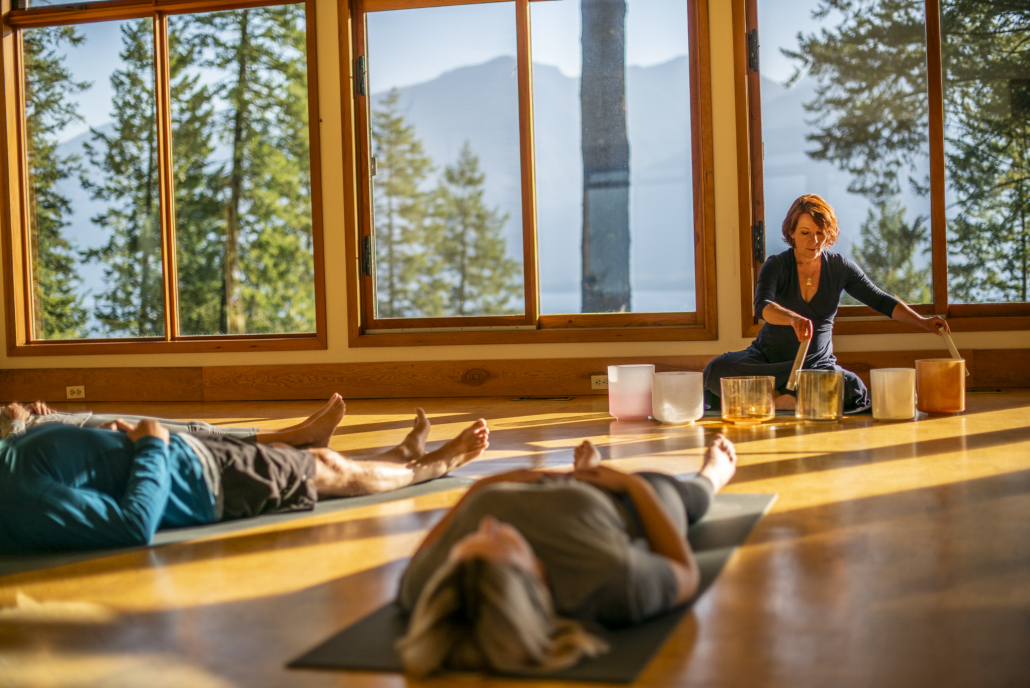Essential Guide To Work-Life Balance

If you could gain two extra hours every day, how would you spend this newly-found bonus time? Would you commit to a morning meditation practice? Would you pursue a creative passion project? Or would you focus on developing and maintaining deeper connections and relationships with those you love? There are many permutations, but it would come as a surprise if the answer was a resounding, “I would love to work more!”.
However, if our actions do the talking, it is the truest answer. Since 2020, the average work day for salaried employees in North America has elongated by almost two hours. Call it the remote work era. Call it ambition. Call it guilt. Call it what you will, but the dark truth to this extended workday is that we are no more productive than we were pre-pandemic. Instead, we are more distracted, more interrupted, more often “on”, and most importantly — more out of balance.
No matter the environment, industry, or job level, being unable to turn off work and re-balance one’s life is leading to a decrease in attention spans, an increase in stress and burnout culture, and an overall mental health crisis.
If you find yourself exhausted, constantly blurring the lines between work and life, and generally unable to shift your thoughts and focus away from your theoretical “nine-to-five” – this article is for you. Here, we’ll explain work-life balance, why it’s important, and offer up a proven, easy-to-implement framework for establishing a sustainable work-life balance.

Evolution of Work-Life Balance
In the 1970s and 1980s, baby boomers began labeling their increasing challenges related to juggling career performance, raising young families, and satisfying personal goals with the term work-life balance. Once taboo, the term grew to be a persistent point of discussion around dinner tables, boardroom tables, and media. So much so that in 2019, the World Health Organization (WHO) formally recognized “burnout”—the direct result of poor work-life balance— as an “occupational phenomenon”, and defined the “syndrome” as chronic, unmanageable workplace stress that leads to “depletion, exhaustion, mental distance from one’s job, feelings of negativism or cynicism related to one’s job, and reduced efficacy”.
Today, the conversation around work-life balance may be sparked by our connectedness to, and distractedness from, technology. Our devices are always on, and therefore, so are we. Work communications overflow into our personal time, stretching our work day, while constant notifications, often from multiple devices, have diminished our attention span to less than that of a goldfish. Each distraction we attend to has a true cost. Gloria Mark, Ph.D., led a productivity study at the University of California, Irvine which concluded that it takes 23 minutes and 15 seconds to refocus after every instance of disruption. Compounding this is the fact that we rarely return to the original task right away and instead, slot one or two intervening tasks in between. We find ourselves struggling or unable to maintain productivity, focus, concentration, and so we work longer hours to complete the same deliverables within the same deadlines.
Another aspect of work-life balance we are confronted with is that while remote working arrangements appear to be beacons of flexibility, they tend to lead to an increased number of meetings per day, often scheduled back-to-back, while spanning multiple time zones. Because we no longer have serendipitous “water cooler talk”, every interaction needs to be scheduled, and we find ourselves expanding our availability to accommodate others’ schedules, opening up the edges of our calendars and blurring boundaries once again.
Combine the above with the loss of our “transitional” commute, which once physically separated work and life and offered a moment to decompress and self-reflect between the responsibilities of each, and the “nine-to-five” boundaries are blurred to an almost unrecognizable, non-existent point. Our weekends are then overbooked in an effort to pack our schedules with deferred personal, family, and social commitments, and we deplete our energy reserves even further. Come Monday, we find ourselves already longing for another weekend to rest and recharge, and a negative cycle is born.
Sadly, it often takes a “wake-up call” to realize that work-life balance is unsustainable if only attended to when we are off-the-clock. Without self-appointed permission to establish work habits and boundaries that respect our most precious asset—our time—we put our mental, physical and overall well-being at risk day-in and day-out.

10 Benefits of Work-Life Balance
- Hormone Balance. Overworking leads to excessive stress, less than ample exercise and movement, and under sleeping. This throws hormone levels out of balance and causes cortisol, our stress-horomone, to be chronically elevated, which has been proven to cause metabolic disease, heart disease, anxiety and depression, and deteriorate brain health. Rather than cortisol levels being sustained at abnormally high levels throughout the entire day, work-life balance allows natural, healthy fluctuations (learn more about stress hormones). This leads to an improved hormonal balance that is integral to one’s overall health and function.
- Improved Sleep. When sleeping, our body and brain heal, restore, and regenerate. Healthy sleep is crucial for long-term health and vitality. It’s as important as nutrition and fitness, but is usually the first thing that falls off our priority list when overworking. A healthy work-life balance will improve sleep patterns, and support the critical 7-9 hours of deep, restful sleep we need on a regular basis. View our Sleep Hygiene Checklist to ensure a deep and restful slumber tonight.
- Reduced Anxiety. Long gone are the days of hunting and gathering and with that, long gone are the days of acute “fight or flight” mode, where adrenaline and cortisol hormones spike for a short period of time and then naturally return to “rest and digest” baseline levels. Here to stay are the days of constant pings, dings, and rings, notfications and alarms, all of which cause repeated spikes of adrenaline and cortisol throughout our day, keeping us in an anxious state of “fight or flight” for extended periods of time. Over time, this becomes the norm, and adrenal fatigue and anxiety disorders become more likely. By purposefully scheduling restorative, resourcing breaks throughout our workday, and being “off” on the weekends, we can center ourselves and better manage the pendulum swing of emotions and anxious thoughts.
- Improved Immunity. When minds and bodies are overworked, exhausted, and stressed, the immune system becomes vulnerable to illness. Work-life balance is a hedge against short and long-term sickness. A strong body and healthy mind means fewer sick days are taken. Everyone reaps the rewards of this consistency, including family members, friends, employers, colleagues, and clients.
- Healthy Digestion. Stress hormones dominate the endocrine landscape and disrupt healthy, healing processes, like reproduction, sleep, and metabolism. Establishing a work-life balance promotes healthy blood and oxygen levels in the stomach, which eases inflammation of the digestive tract. This reduction of inflammation allows the body to return to homeostasis, promoting regular bowel movements and optimal weight management.
- Better Relationships. When our work-life scale tips out of balance, we become consumed with work, thinking about it at all times and at all costs. We lose touch with ourselves, our friends, and our loved ones, offering up only our remnants of attention, focus, and presence. When balance is restored, our mindfulness and ability to be present increases and a virtuous cycle is created; giving to ourselves, our friends, and loved one fills our own emotional reserves, irritability and anxiety decrease, we are less distracted, and thereore better able to deepen relationships with family members, partners, friends, colleagues, managers, and even strangers passing by.
- Improved Focus & Attention Span. Work-life balance doesn’t just mean working less, it means working more efficiently so that you have more time to regenerate and restore yourself. Improving focus and reducing distractions are key to working more efficiently. These skills need to be intentionally developed, and carry over into non-work life, such as being immersed in a passion project, or completely present with a loved one when in coversation. Creating the ability to enter into focused “flow states” reduce stress and anxiety and increases our sense of joy and fulfillment—in all endeavors and interactions, big and small, alike.
- Increased Job Satisfaction. When work success comes in balance, and not at the sacrifice of our physical, mental, and emotional health, a sustaianable sense of accomplishment and passion become familiar, and remain top of mind. We become more resilient and less affected by trivial disruptions at work, increasing our overall happiness with our career.
- Growth Mindset & Authenticity. Work-life balance is a habit, and like all healthy habits, it doesn’t come just by reading this article or being inspired by a cat poster. It takes intention, motivation, and discipline to develop and nurture a sustainable work-life balance. This effort puts your midn into a growth state, rather than a state of decay (e.g. slipping into an anxious tailspin). Repeatedly putting yourself into a growth mindset will allow your authenticity to flourish, and the veil of striving to be something can drop, promoting a sense of serenity and calm—a sense of “OK”.
- Enhanced Creativity & Problem Solving. When life is lived beyond the desk in states of flow, mindfulness, exploration, and enjoyment, it is normal to rediscover childlike curiosity, playfulness, and ease. There are no “hard-stops” to these traits which lend themselves to fostering creativity and problem solving throughout one’s life.

4 CORE NEEDS OF WORK-LIFE BALANCE
Before diving into the actions that will help establish work-life balance, it’s important to understand what’s going on beneath the surface. While humans are multi-faceted, diverse, and dynamic, we all share four core needs that can be categorized as: physical needs, mental needs, emotional needs, and relational needs.
It is natural for us to take care of and resource ourselves within one specific category that we enjoy the most or have success in, while neglecting the others. This provides fleeting moments of accomplishment and success, but at the end of the day, we still feel empty or unfulfilled. What’s missing is balance. Balance is the foundation of our health, and just like the houses we live in, each of the four walls need to be strong, or else there is risk of collapse. To establish overall balance in our life, we must work every single day to make active, deliberate decisions that move the needle in each of these four categories:
- Physical & Physiological Needs. Biological needs related to our bodies, their functioning, and our survival:
- Clean nutrition that fuels our bodies and brains with ample macro and micronutrients.
- 7-9 hours of deep, restful, undisturbed sleep.
- Functional, oxygenating movement of our bodies.
- Clean air & deep breathing.
- Hydrating often with access to uncontaminated water.
- Living in a safe and comfortable dwelling.
- Naps when and if required.
- Mental Needs. Personal and professional development that keeps our mind sharp and expansive:
- Curiosity-inducing activities that develop new neural pathways. These stimulate learning through self-development and growth while simultaneously countering dementia.
- Creative pursuits that stimulate the often-neglected right hemisphere, leading to mental hemisphere balancing.
- Mindfulness exercises to induce flow states and solace.
- Emotional & Relational Needs. Our innate need to emotionally connect and affiliate, whether through interpersonal relationships, or belonging to a group:
- Having access to a confidant that can safely receive our fears and vulnerabilities, such as a licensed therapist.
- Participating in reciprocal situations that balance giving and receiving.
- Nurturing loving relationships, full of depth and connection.
- Receiving physical touch.
- Spiritual Needs. Finding meaning, purpose and value in our lives. This can be associated with a belief in something bigger or a sense of hopefulness, peace, or gratitude:
- Read texts and listen to podcasts that inspire a sense of beauty and mystery within life.
- Self-reflect on one’s existential purpose, philosophizing one’s own narrative that provides context.
- Find outlets through which one dedicates their unique gifts or skills so as to experience a sense of purpose.

5 Critical Actions for Work-Life Balance
There are 5 critical actions we must take daily to establish a healthy work-life balance. We call these “The 5 P’s”. Easy to remember, the 5 P’s a foundational framework you can implement throughout the ebb and flow of daily life. Implementing the 5 P’s into your life will help you discover and maintain a healthy work-life balance:
- Power Up.
- Start each day with 5 minutes dedicated solely to yourself and feeding your soul. Do this before checking your phone. Suggested activities include: meditation, gentle stretching, slow breathwork, brewing yourself (and enjoying) a cup of tea or coffee, listening to a song you love, heading outdoors for a grounding walk, reading or journaling.
- Eat a healthy breakfast within 30 minutes of rising (after intermittent fasting for at least 12-hours overnight). This will jump start your brain by increasing the glucose levels in your bloodstream, while an overnight fast will reduce inflammation. Browse our Healthy Breakfasts.
- Move your body so as to promote circulation and oxygenate your brain. This could be through a HIIT class, walking, doing yoga or any other form of exercise.
- Prepare.
- Shower and dress for work as if you were going to the office, even if you are working remotely.
- During your shower, use hydrotherapy (start hot, go cold, end warm) to aid in natural detoxification, reduce inflammation, and support your cardiovascular system.
- Once at your workspace, immediately review your high-level to-do list (aka “Top 10 Priority List”) and re-prioritize as needed. Check your emails as the second order of business, triaging for urgencies, and then re-prioritize your high-level to-do list once again if necessary.
- Calendarize your day by creating finite blocks of time dedicated to each task, including time for “resourcing” breaks where you refuel and recharge. Visualize which parts of the day are for focused work versus meetings.
- Shower and dress for work as if you were going to the office, even if you are working remotely.
- Perform.
- Respect and revere the time you dedicate to working on independent projects (aka “Focus Time”). Turn off notifications. Close your office door. Put away the snacks. These boundaries allow you to spend a pre-determined window of time distraction-free, highly efficient, and entering a flow state.
- Once you have completed each interval of focus time, scan your emails and messages for high priority messages. Re-prioritize your Top 10 Priority List if required.
- Equally respect and revere the time you have set aside between Focus Time to recharge and reset (aka “Resourcing Time”). Resourcing activities include; using the restroom, eating a healthy snack, stretching, going outside, walking some stairs, meditating, or slotting in any other short, state-shifting activity. Resourcing is an efficient use of time that lowers cortisol levels, invites balance, and invites enjoyment throughout your day.
- Conduct and attend well-orchestrated meetings that follow a pre-determined agenda. Schedule a 60-minute meeting where 45-minutes is dedicated to the agenda, and 15 minutes is allocated to Resourcing Time.
- Nurture your EQ by intentionally building human connection within your team. Add time to the beginning or end of virtual meetings to connect with colleagues and re-create “water cooler chats” even if working from a distance.
- Pivot.
- Once your work day is complete, and prior to leaving your workspace, prepare your Top 10 Priority List for the following day. Download your work thoughts into this list and put non Top 10 items in their own secondary list. This will put your mind at ease by capturing what is important to carry over to the next day, allowing you to leave work at work.
- Spend a short moment (3-5 minutes) to reflect and journal about your workday; acknowledge with radical honesty what is working or not working and how you feel. This will help you mindfully notice what is of benefit or what is preventing you from moving in your desired direction.
- Spend 5-20 minutes state-shifting and rebalancing your hormones in alcohol-free, carb-free, fat-free, and sodium-free ways (aka the post-work happy hour glass of wine and salty snack). Alternatively, lower cortisol levels and raise the feel-good hormones of dopamine, serotonin, and oxytocin naturally by:
- 5 minutes: Pet an animal.
- 20 minutes: Go into nature and paying attention with all your senses.
- 20 minutes: Touch or be touched through a modality such as massage.
- 20 minutes: Do something creative.
- 20 minutes: Get into a flow state that unites your brain with your body.
- 20 minutes: Nurture and tend to your garden.
- Eat an early, healthy, and light dinner that is at most 30% of your day’s calories. This will limit your body’s storing of unused calories during sleep.
- Move after dinner, even if it’s a 15 or 20-minute walk around the block. This keeps blood sugar levels from spiking and regulates metabolic hormones.
- Attend to your chores and then decompress with light entertainment, such as watching TV, reading, or enjoying a hobby.
- Power Down.
- Turn off or put away all electronics at least 1 hour before bed. Perform one last check for urgent emails prior to doing so, but do not engage or respond. Instead, re-prioritize your next day’s Top 10 list next if necessary.
- Enjoy at-home self-care practices that optimize your evening for deep, restful sleep. Slow, easy, accessible ideas include:
- Restorative yoga. Try this 45-minute wind down practice.
- Soak in a bath filled with Epsom salts with drops of natural lavender or rose essential oils.
- Spend quality, connective time with your partner. Give one another a massage, discuss the best parts of your day, share what you are most grateful about.
- Engage in a pre-bed sleep hygiene routine. Try dimming the lights to low amber, lighting some candles, and mindfully enjoying soft, relaxing music.
- Own the end of your day by spending 5 minutes with yourself, on yourself, for your authentic self. Read a poem, meditate, or journal.

Reclaim Your Work-Life Balance
While the conversation surrounding work-life balance has evolved since the baby boomer era, it is more important today than ever. We need to monitor ourselves internally and be aware of how we spend our most precious asset: our time. Rebalancing is an ongoing process, as is reminding ourselves that we deserve inner peace, moments of self-care, and choreographed transitions through our day. Not only will this help you engage in positive, fulfilling activities, but it will boost your energy, mood, and resilience. We are, after all, human beings and not human doings.
Hopefully these tips and tricks help you discover a sustainable work-life balance. If you feel you are in need of more hands-on guidance, we invite you to explore our award-winning health reset retreat located in the lush forests of British Columbia, Canada, where you can spend a week unplugging, recharging, and forming sustainable, healthy habits.
What is Mountain Trek?
Rated one of the best wellness retreats in the world and located in the healing forest of British Columbia, Canada, Mountain Trek is a week-long immersive health reset program proven to dramatically transform your body, mind, and spirit. Whether you feel overworked, overweight, or just in need of time to unplug, slow down, and recharge, Mountain Trek is for you.
To learn how our award-winning health retreat can help you melt stress away, restore energy levels, burn fat, purge toxins, and return home revitalized, recharged, and years younger than when you arrived, please email us at info@mountaintrek.com or reach out below:



 The first step involved in building healthy habits is to identify what your larger wellness goal is. This could be as simple as “get healthy” or “get healthier”. That’s great, but the more specific the better. What does “getting healthy” actually mean for you? Does that mean you want to lose weight, improve sleep, reduce stress, increase physical fitness, etc.?
The first step involved in building healthy habits is to identify what your larger wellness goal is. This could be as simple as “get healthy” or “get healthier”. That’s great, but the more specific the better. What does “getting healthy” actually mean for you? Does that mean you want to lose weight, improve sleep, reduce stress, increase physical fitness, etc.?











